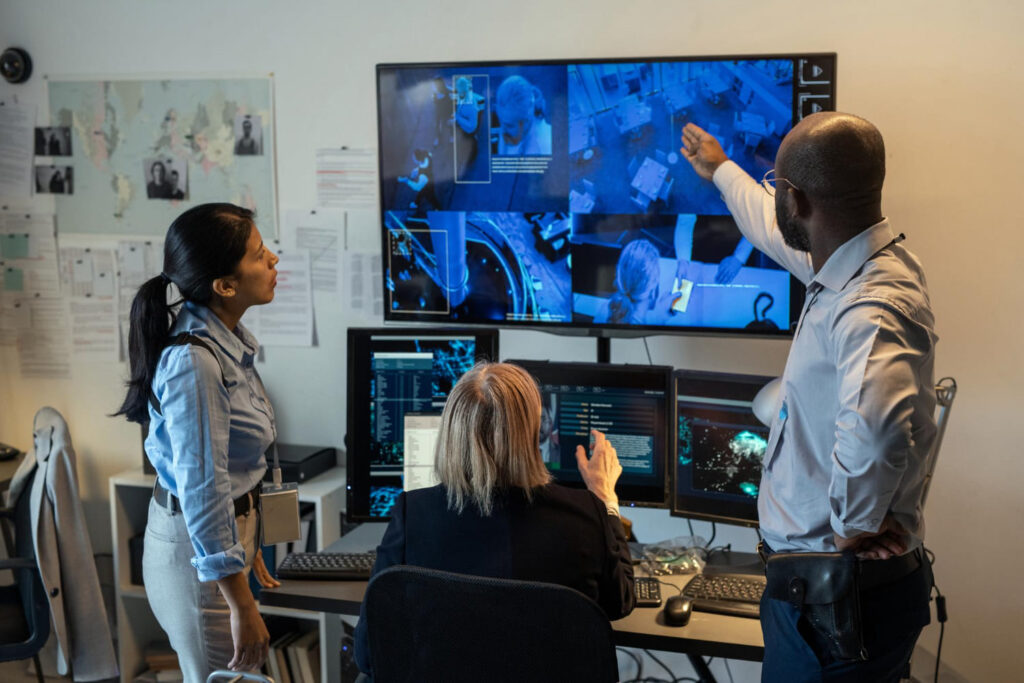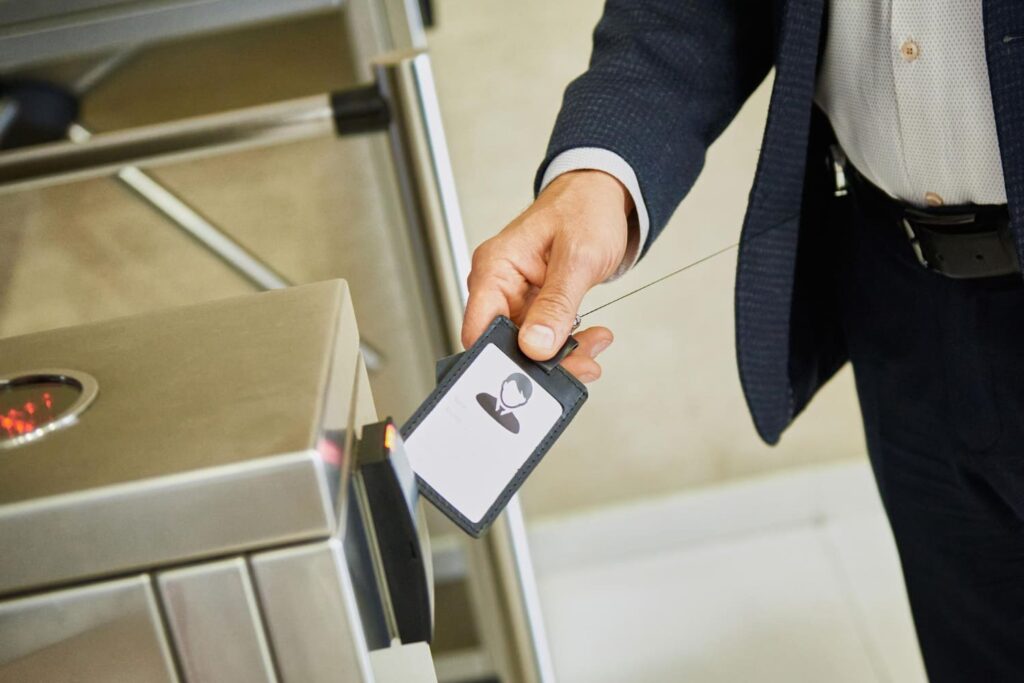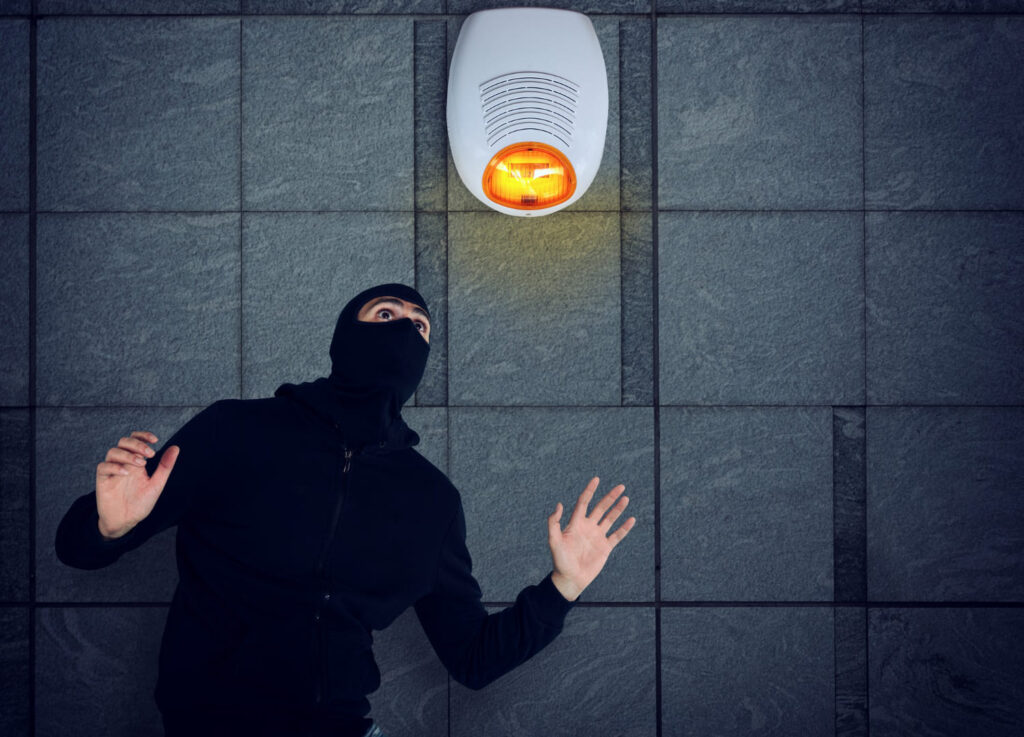
Cyber Security
Exploring the Fundamentals of Physical Security
 Andrea Abbondanza ,
18 Jan, 2024
Andrea Abbondanza ,
18 Jan, 2024
Physical security is all about protecting your premises from intruders while safeguarding your most valuable assets: your people, data, and reputation. A breach of physical security can have devastating consequences for your company.
That’s why it’s crucial to understand the fundamentals of physical security and implement effective measures to prevent, detect, and respond to physical threats.
Let’s explore the basics of physical security, such as its definition, importance, key measures, policies, and common threat examples. Read on!
What is Physical Security?

Do you have a security camera or alarm system in your office? What about a badge or a password to access your workplace or computer? A fire extinguisher or a smoke detector in case of a fire?
These questions shed light on the examples of basic physical security for companies.
In essence, physical security is the practice of protecting your physical assets, such as people, buildings, equipment, or data, from harm or unauthorized access. The risks range from natural disasters to human-inflicted threats.
Some of the most vital elements of physical security are:
- Perimeter protection: Guards and gates for security
- Access control: Locks, keypads, and biometrics
- Visibility of key areas: Lighting and cameras
- Intrusion detection: Motion sensors and tripwire alarms
- Infrastructure safety: Protecting the power, fire systems, network, and water
- Staff training: Employees capable of incident handling
- Incident response: A ready emergency process
- Site layout and security: Weak points and high-risk areas identification
Why Physical Security is Important

A study shows that physical security has a greater impact on corporate efficiency than network security. Companies lost more than $1 trillion in revenue due to physical security events in 2022, as stated by the World Security Report.
This shows that physical security is important for any organization, as it can help prevent loss, damage, theft, sabotage, or violence while keeping your employees, customers, and visitors safe.
A common misconception about companies’ physical security is that it is only crucial to safeguard the front door, arming it with CCTV and security guards, while not focusing on the entire building’s safety. Guess what? It is not enough!
Note this: your physical security practice must be implemented in your whole office building.
Key Physical Security Measures

Learn these key physical security measures to ensure you secure your company assets properly.
Deterrence
Deterrence is aimed at discouraging potential intruders, like people, animals, or vehicles, from attempting to breach a secured facility.
It involves various methods such as displaying warning signs (e.g., “No trespassing”, “CCTV in operation”), installing visible security features like locks, tall perimeter fences, cameras, barbed wire, alarms, and lights, and employing security personnel or patrols. These measures make the asset appear too risky or difficult to access.
Detection
Detection functions as a constant monitoring system involving advanced technology like motion sensors, surveillance cameras, alarm systems, or advanced AI analytics, which are designed to identify and catch any unusual activity immediately. These tools are crucial for early awareness of potential security breaches, allowing for quick response.
Delay
Delay focuses on slowing down intruders rather than halting them completely. This method employs reinforced doors, complex locks, and other obstacles that take time to overcome. The primary goal is to delay an intruder’s access to a target, giving security professionals additional time to respond to the intrusion.
Response
Response refers to the immediate and effective actions taken in the aftermath of a security breach. This includes security personnel working together and following protocols to address threats, such as mobilizing on-site teams or contacting law enforcement.
The emphasis is on handling incidents in a timely, organized, and efficient manner to neutralize threats and minimize damage.
Common Physical Security Threats, Vulnerabilities, and Risks

According to Pro-Vigil’s report “The State of Physical Security Entering 2023”, 28% of businesses reported an increase in “physical security incidents” in 2022. While physical security threats may differ for each business, there are several common ones.
Theft and burglary
Thieves and burglars steal or attempt to steal valuable or sensitive items from a protected area. This event causes significant losses, damages, and disruptions to the business.
Some businesses are extremely vulnerable to physical security risks such as theft because of their stored assets, such as jewelry stores, phone stores, or even wealth management firms. Hence, you will notice extra physical security measures such as locks, alarms, cameras, sensors, guards, and access control systems at these kinds of stores.
Vandalism
Vandalism involves causing damage or destruction to property or equipment in a protected area. The causes vary, from dissatisfaction with the company’s practices or personnel to personal or ideological disagreements, thrill-seeking, peer pressure, group identity, or political activism. On top of that, businesses located near areas like nightclubs or bars are also potentially attacked.
It can result in financial losses, operational disruptions, and aesthetic degradation for the owners or occupants of the area.
Unauthorized entry
Unauthorized entry includes gaining access to a site without permission. This isn’t just about theft; it can also mean someone snooping around for information, vandalizing property, or even posing a threat to people inside. It’s a big deal because it breaches the first layer of security, challenging the safety and integrity of the space.
This event involves methods such as using stolen passes or codes, tailgating, or employing social engineering tactics.
Physical Security Policies

Physical security policies are the rules and guidelines that define how measures are implemented and enforced in your protected area. Some examples of physical security policies are:
Take a risk based-approach and do your research
Assess the likelihood and impact of different physical security threats and gather relevant information and data to support the decision-making and planning process. For instance, set up CCTVs instead of hiring more security guards if possible. Also, ensure the companies you’re purchasing technologies from are reliable and truly understand their products.
This helps to prioritize the most critical and urgent physical security issues and allocate the appropriate resources and measures to address them.
Ensure access controls are tied to people and customize access
Your policy should prioritize individualized access controls, linking entry permissions to specific individuals rather than broad roles. For example, tailor ID cards for each person. This customization ensures that each person has access only to necessary areas, minimizing the risk of unauthorized entry. It’s akin to selectively distributing keys in a house, where each key holder can access only certain rooms.
Have audit trails and keep inventory
Audit trails serve as detailed records of who attempts to access specific areas, who successfully access it, and when they do it. These data can help you track whether there are multiple failed attempts, signaling a potential bad actor.
On top of that, keep a current inventory to track all assets and their conditions. If a card is lost or an employee’s situation changes, immediately revoke their access. Retrieve keys promptly when someone departs.
Educate staff to follow protocol for dealing with guests
Staff have to appear hospitable and presentable. Hence, educate them with the right guest-handling protocols. This includes training team members to verify visitor identities and escort them to secure areas, ensuring no one goes unattended.
More than hospitality, it’s a security precaution. They should also be able to recognize unusual behavior and understand the risks associated with unaccompanied guests. Physical security training programs can help raise employees’ awareness of potential threats and vulnerabilities.
Test your capabilities and processes
Regularly verify the functionality of alarms, locks, and surveillance systems, as well as assess the team’s response time and adherence to protocols during security breaches. Such tests help identify weaknesses and ensure the team is prepared, playing a crucial role in upholding strong security.
Frequently Asked Questions
In the age of digital threats, why is physical security still crucial, and what role does it play in overall risk management?
Physical security is vital in the digital age as it protects against tangible breaches that can lead to data loss and supports overall risk management by safeguarding both physical and digital assets.
What are the primary objectives of implementing physical security in a business or residential setting?
The primary objectives of implementing physical security in business or residential settings are to prevent unauthorized access, protect people and property, safeguard confidential information, deter criminal activities, and ensure a safe and secure environment.
Are there specific regulations or standards that dictate the requirements for physical security in different industries?
Different industries adhere to specific physical security regulations and standards: financial institutions follow banking regulators’ guidelines, healthcare facilities comply with HIPAA for data security, government buildings use Department of Homeland Security standards, and more.
Conclusion
A breach in physical security can have catastrophic effects on a company. Thus, it emphasizes the need to implement comprehensive measures above to prevent, detect, and respond to physical threats.
Above all that, tailoring physical security policies for your company that define how measures are implemented and enforced in your protected area is also vital.
If you’re looking for professional guidance for a tailored physical security system, contact Fluxgate today!







